
How to Create a Successful Referral SaaS Program+ 5 Examples

by
Wiktoria Slowikowska
Sep 14, 2024
Identify and convert your most valuable users
Sign Up
SaaS customer acquisition costs have soared 70% in five years, but savvy companies are fighting back with a secret weapon: strategic referral programs. The data speaks volumes:
4x higher conversion rates
16% higher customer lifetime value
Up to 5x lower churn
In this guide, we’ll dive into why referral marketing is so powerful for SaaS businesses and give you actionable insights on how to implement and optimize a referral process that works.
Understanding SaaS Referral Programs
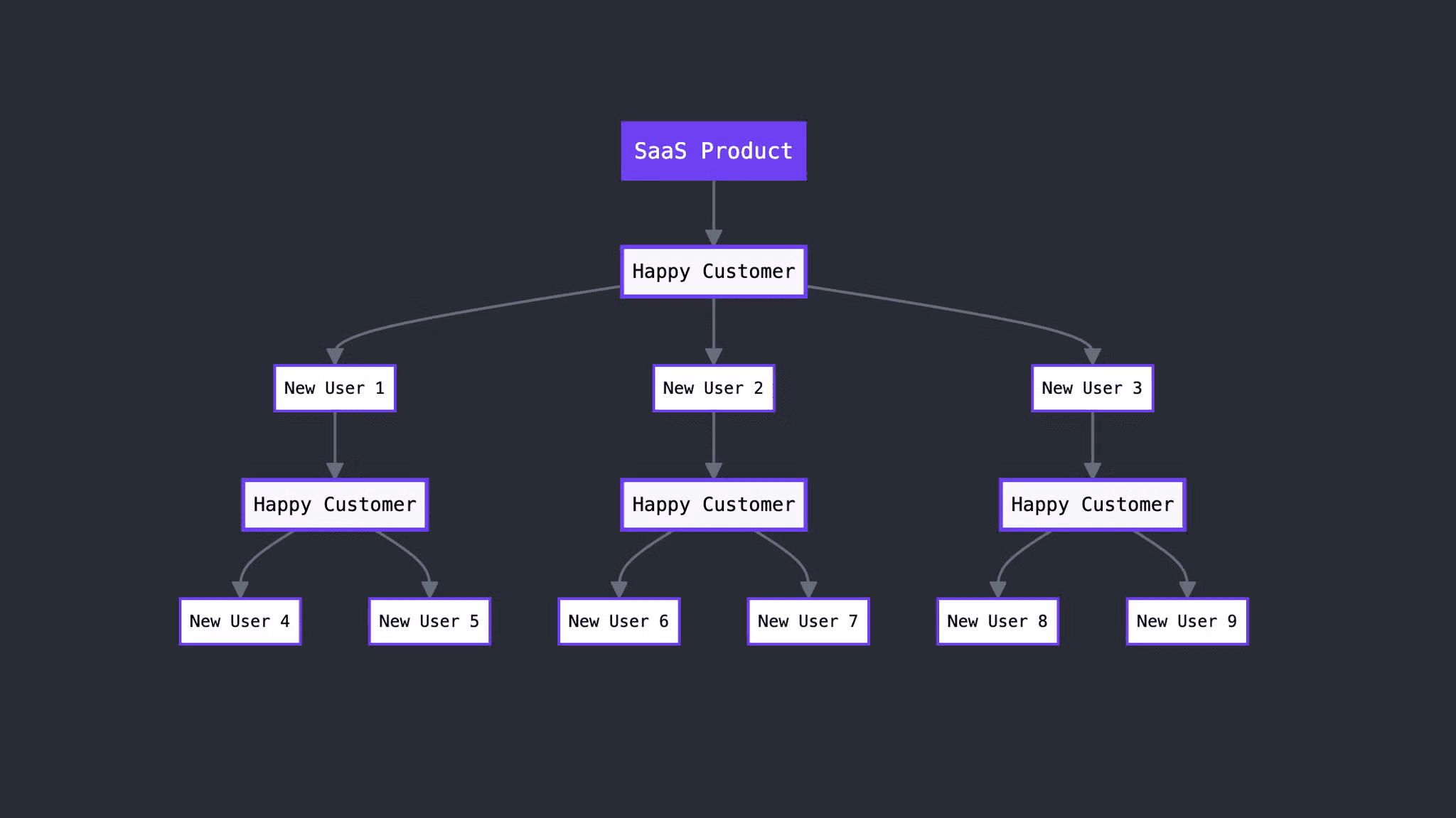
A SaaS referral program is essentially a structured system where you incentivize your existing customers to recommend your software to others in their network. It’s the digital version of word-of-mouth marketing, turning satisfied customers into enthusiastic brand advocates.
Referral programs play a massive role in SaaS success. In fact, some of the best SaaS companies see as much as 20% of their customer base coming from referrals alone. This stat highlights the transformative potential of a well-run referral program—not just for growth but for building long-term sustainability.
The Strategic Advantages of a Referral Program
One of the reasons referral programs work so well is because they build trust and credibility. In an age where people are more skeptical of digital ads and marketing, a personal recommendation from someone they trust can cut through the noise, making it much easier to acquire new customers.
Another big advantage? Cost-effectiveness. When you leverage your existing customers to bring in new users, your customer acquisition costs drop.
You’re essentially using a customer who already loves your product to help you grow, meaning you’re spending less on traditional advertising.
Also, referred customers are usually higher-quality users. They tend to have a stronger alignment with your product because the person referring them already knows what works and who would benefit. This alignment often results in better conversion rates and higher retention.
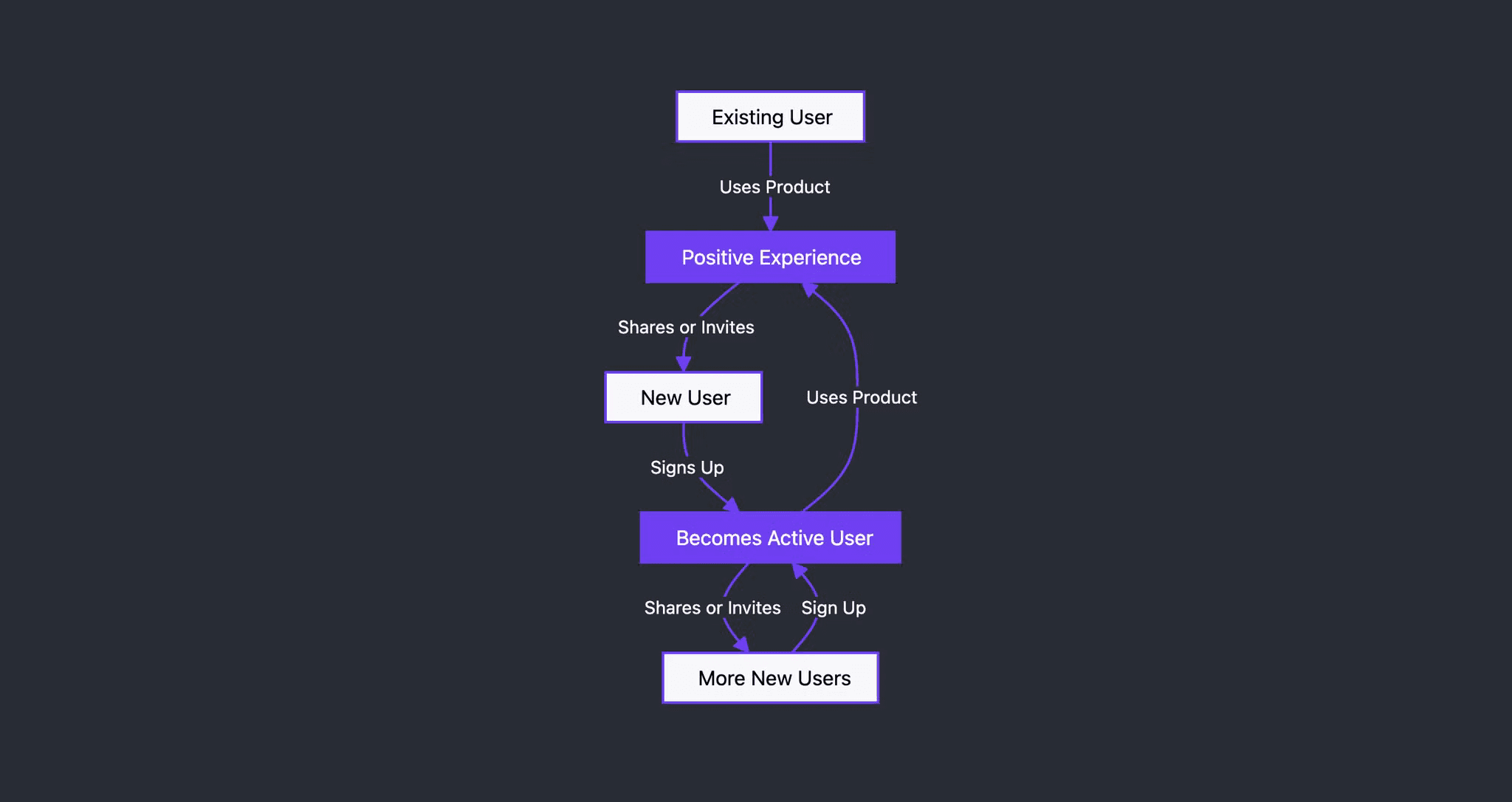
It’s not just about bringing in one or two new people—it’s about building a self-sustaining engine that keeps your SaaS growing.
Key Elements of a Successful SaaS Referral Program
If you want your referral program to really take off, simplicity is key. The process has to be intuitive and easy to use. The less effort it requires, the more likely customers will participate.
For example, pre-drafting referral emails that users can simply send with a click has been shown to boost participation rates significantly.
Your incentives also need to hit the mark. Interestingly, in the world of B2B SaaS, non-monetary rewards often work better. Things like account upgrades, early access to new features, or community recognition can be much more compelling than cash.
Behind the scenes, having robust tracking and analytics in place is critical. You need to accurately track who’s referring who, see how the program is performing, and identify your top referrers.
There are plenty of tools, like Megaphone, that can help automate this process and provide valuable insights.
And of course, none of this will matter if your customers don’t know about your program. Promoting it through multiple channels, whether it’s email campaigns or landing pages, is essential to keeping it top of mind.
Choosing the Right Incentives to Motivate Your Customers
The incentives you offer play a major role in how successful your referral program will be. When selecting them, consider what would best motivate your users to share. Also, think about what’s sustainable for your business. A good starting point is to look at the average value of a sale and work backward from there to set a reasonable reward.
Here are some common SaaS referral incentives:
1. Cash Rewards
Cash is a universal motivator. Offering direct cash payments or deposits is one of the top-performing incentives across industries. Customers love the flexibility and value of cash, and it’s a straightforward way to reward them.
2. Referral Fees
Referral commissions, especially in B2B SaaS, can be highly motivating. You can offer a percentage of the total sale, with commissions ranging from 5% to as high as 50%. Consider tiered structures that incentivize customers to keep referring, offering higher commissions for more referrals.
3. Subscription Discounts
If long-term loyalty is a priority, offering discounts on future subscriptions can be a powerful incentive. These discounts keep users engaged with your platform while simultaneously rewarding them for their referrals.
4. Free Subscription Time
Another popular incentive is offering a free month or two of service. It’s a great way to show both new and existing customers the value of your product while encouraging continued use and retention.
5. Gift Cards
Gift cards are another flexible option that users appreciate. They get to choose how to spend their reward, making it a popular choice for many referral programs.
6. Feature Unlocks or Upgrades
Sometimes, giving users access to higher-tier features is the perfect incentive. This doesn’t just encourage referrals but also serves as a subtle upsell, showing customers the value of your premium offerings.
How to Implement a Referral Program, Step by Step
Let’s walk through a step-by-step approach to launching your referral program.
1. Define Your Objectives
What are you aiming to achieve? Whether it’s growing your user base or increasing revenue, having clear, measurable goals will give you a target to aim for.
2. Understand Your Audience
Who are your best customers, and what motivates them? Understanding this will help you design incentives that actually resonate with them. Non-monetary rewards—like feature upgrades or exclusive content—might hold more appeal than cash.
3. Design the Process
You’ll want to make the referral experience seamless. This includes a well-designed referral page, pre-drafted email templates, and easy sharing options.
4. Set Up Tracking
Implement robust tracking mechanisms so you can monitor referrals and measure success. Tools like referral software can automate this process and offer valuable insights.
5. Promote, Promote, Promote
Finally, create a solid communication strategy to get the word out. Use email campaigns, in-app notifications, and your website to ensure your customers know about the referral program.
Best Practices for Referral Programs
Don’t just ask for a referral once and forget about it. You’ll want to nurture customers regularly—but not too often. The sweet spot is somewhere between every three and six weeks. Consistency is important.
Consider offering two-sided incentives—rewards for both the referrer and the new customer. That way, everyone wins, and you increase participation from both sides.
If you’re wondering who to target, use tools like Hyperaktiv. Hyperaktiv helps you see the most engaged users and identify champions. The customers who score you the highest are often your happiest and will be more willing to refer others.
The Art of Timing Your Referral Requests
Knowing when to ask for referrals can make all the difference, and timing matters—a lot. In SaaS, the ideal moment to ask for a referral is during what’s called a “happy moment.”
These are the times when your customers are particularly pleased with your product—whether they’ve just had a positive support experience, achieved a major goal using your software, or given you a high NPS score.
Align your referral requests with these happy moments to increase the chances of a successful referral.
You can even set up automated triggers to send referral requests after key milestones, such as when a customer has been with you for six months or upgraded their plan.
Addressing Challenges Along the Way
Sometimes, you might encounter low participation rates. If that happens, it’s a good idea to evaluate the value your product is delivering.
Are your customers satisfied enough to recommend you? Focusing on customer success and service can make a huge difference.
Budget can also be a concern, but you don’t necessarily need a big one to run an effective program. You can get creative with non-monetary incentives like feature upgrades or early access to new tools.
For technical complexities, start simple. Don’t overwhelm yourself or your team by over-complicating things in the beginning. As you grow, you can scale and improve the system.
Lastly, keep in mind the potential for fraud. Be sure to have clear terms and conditions, and if possible, use referral software with fraud detection built in to protect against abuse.
How to Measure Success
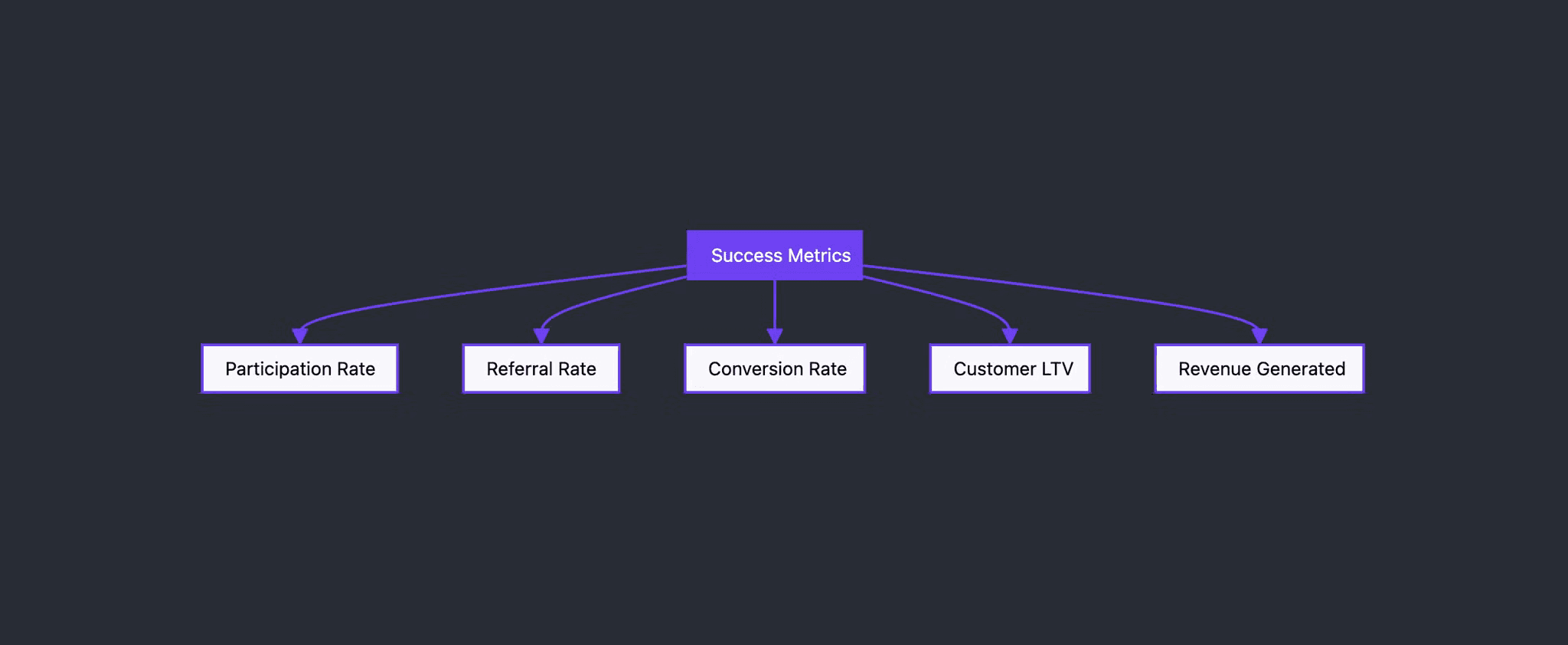
Once your program is up and running, how do you know if it’s working? Keep an eye on a few key metrics:
Participation Rate: How many customers are making referrals?
Referral Rate: How many referrals does each customer make?
Conversion Rate: How many referred leads become paying customers?
Customer Lifetime Value (LTV): How does the LTV of referred customers compare to others?
Revenue Generated: What percentage of your revenue is coming from referrals?
5 SaaS referral program examples
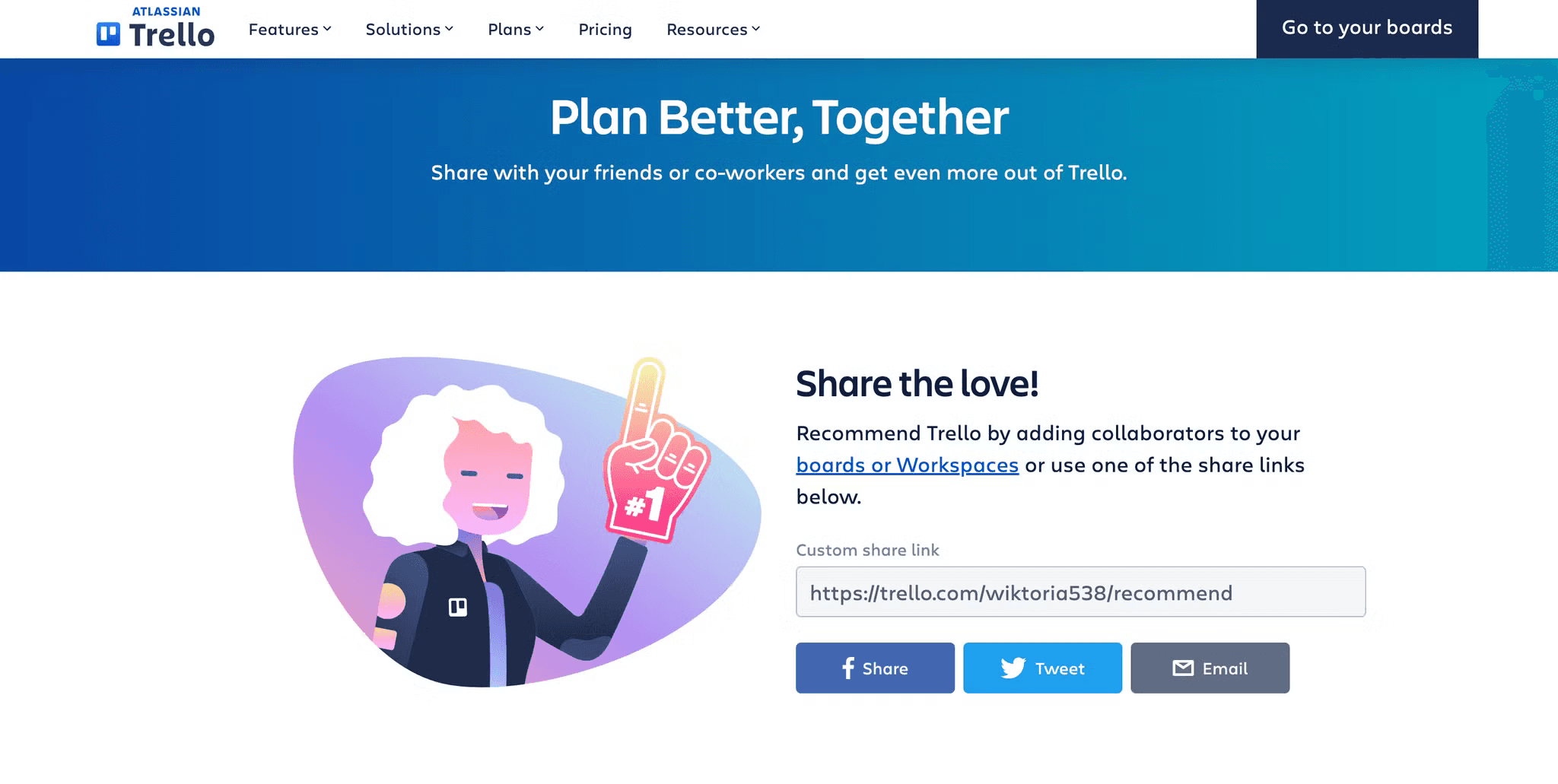
1. Trello
Task management tool, makes it easy for teams to stay organized. With its referral program, you get a free month of Trello Gold for each friend who signs up. Refer up to 12 users to earn a full year of Gold for free.
Why it's effective:
Aligns with product's collaborative nature
Offers valuable incentive (premium features)
Encourages multiple referrals
Benefits both referrer and new user
Increases engagement with premium tier

2. Dropbox
Cloud storage service, offers extra space for referrals. Users can earn 500 MB (Basic) or 1 GB (Plus) for each new user they refer. The process is simple: log in, send referrals via email or a custom link, and get free space when friends sign up.
Dropbox pioneered the use of non-monetary rewards in referral programs. By offering additional storage, they increase user engagement and provide a benefit that's exclusive to their platform.
Why it's effective:
Offers a tangible, useful reward (extra storage)
Simple three-step process
Incentivizes both Basic and Plus users
Provides multiple sharing options (email or link)
Mutually beneficial for referrer and new user
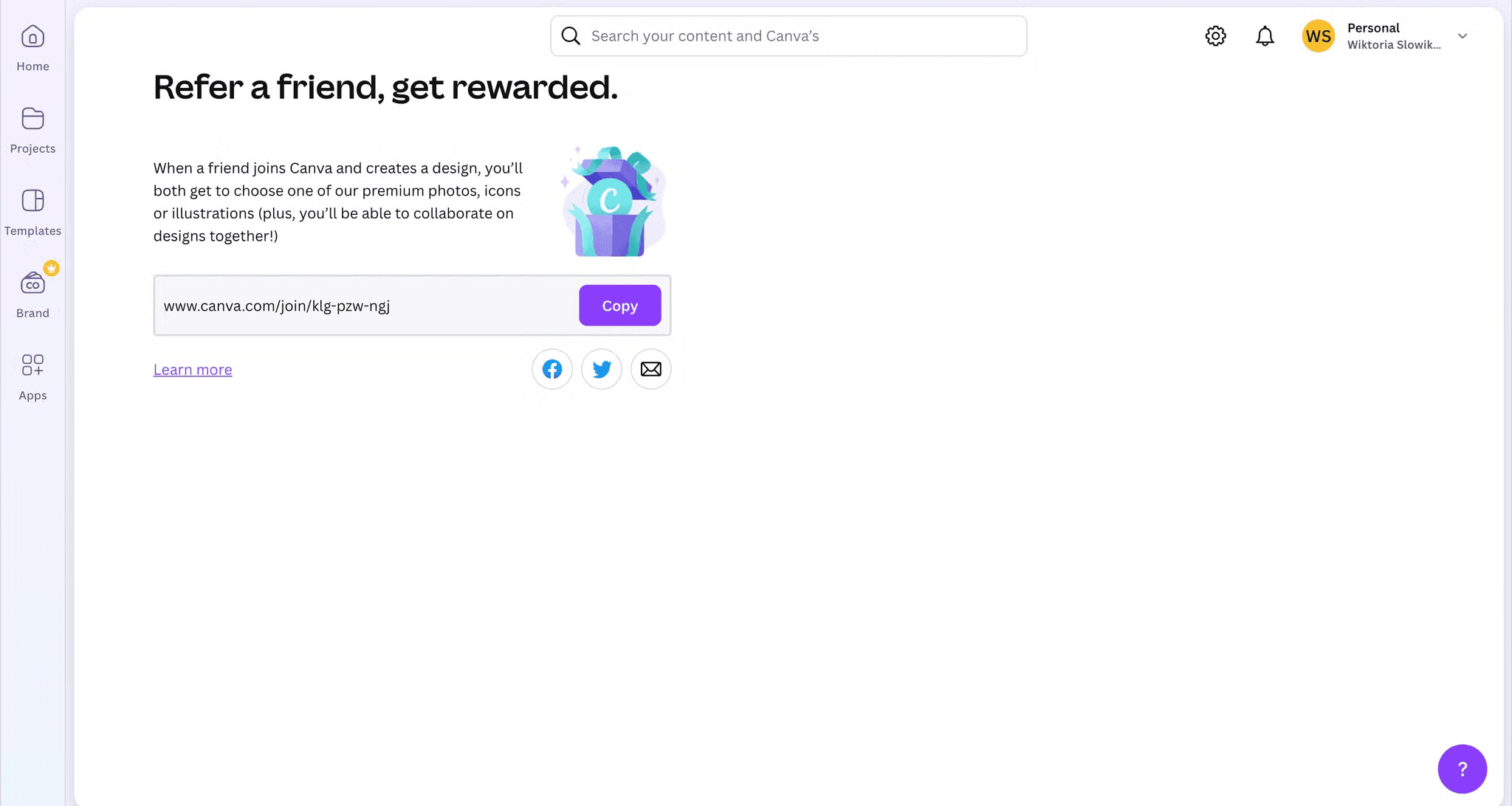
3. Canva
Popular graphic design platform, offers a referral program that leverages its premium features. Users on the Canva Free plan can earn Canva credits for each successful referral. These credits are virtual tokens that can be used to purchase premium elements like images, illustrations, icons, and music.
The process is straightforward: users share their referral link with friends, and when a friend signs up, the referrer earns Canva credits. This program not only rewards users with access to premium design elements but also allows free users to explore and experience the value of Canva's paid features.
Why it's effective:
Aligns reward with product value, enhancing user experience
Strategically timed referral prompts after design completion
Drives engagement and provides upsell opportunities
Leverages word-of-mouth marketing from satisfied users
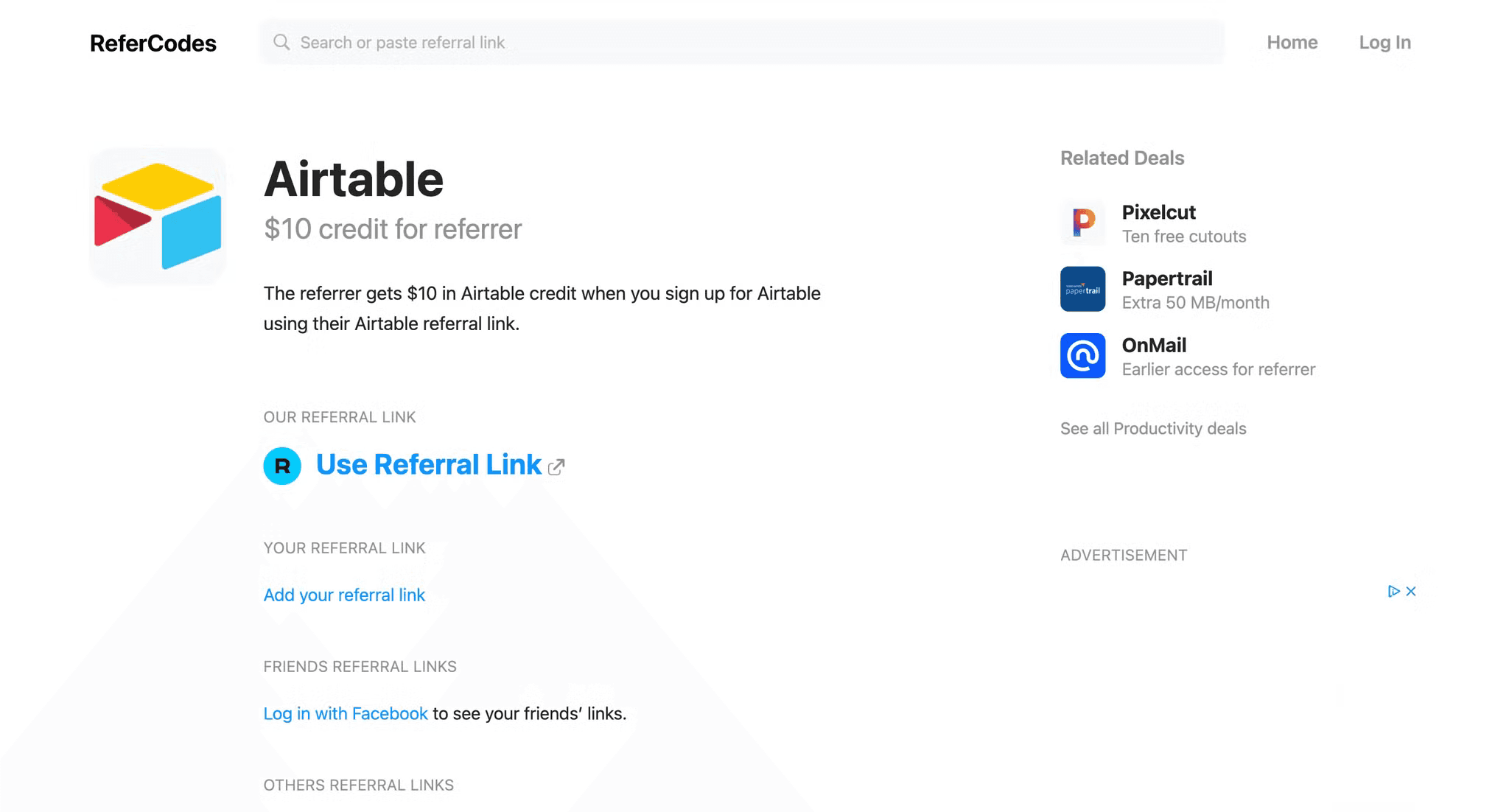
4. Airtable
Versatile cloud collaboration service, offers a straightforward referral program:
The referrer receives a $10 credit for their Airtable account when someone signs up using their unique Airtable referral link. This incentive encourages existing users to share Airtable with their network, potentially driving new user acquisition.
Why it's effective:
Offers a tangible monetary reward, which can be applied to Airtable's services
Simple process: share a referral link, get rewarded when someone signs up
Leverages existing users' networks for organic growth
The credit amount is significant enough to be attractive, yet sustainable for the company

5. Milanote
A tool for organizing creative projects, offers an innovative referral program that directly enhances the user's experience with the product:
Users can double their card limit by inviting friends to Milanote. For each person who signs up using the referral link, the referrer's storage increases by 20 cards, up to a maximum of 100 extra cards.
Why it's effective:
Directly increases product usage capacity, enhancing the user experience
Encourages users to invite multiple friends (up to 5 for maximum benefit)
Aligns the reward with the core value proposition of the product
Creates a clear, tangible benefit that users can immediately appreciate
Milanote's approach cleverly ties the referral reward to increased product utility, potentially driving both user acquisition and increased engagement with the platform. By offering more storage space, they're not only attracting new users but also enabling existing users to expand their usage, which could lead to higher retention and potential upgrades to paid plans.




